I wanted to leverage this answer How to plot scikit learn classification report? turning an sklearn classification report into a heatmap.
It's all working with their sample report, however my classification report looks slightly different and is thus screwing up the functions.
Their report (notice the avg / total):
sampleClassificationReport =
precision recall f1-score support
Acacia 0.62 1.00 0.76 66
Blossom 0.93 0.93 0.93 40
Camellia 0.59 0.97 0.73 67
Daisy 0.47 0.92 0.62 272
Echium 1.00 0.16 0.28 413
avg / total 0.77 0.57 0.49 858
My report with metrics.classification_report(valid_y, y_pred) :
precision recall f1-score support
0 1.00 0.18 0.31 11
1 0.00 0.00 0.00 14
2 0.00 0.00 0.00 19
3 0.50 0.77 0.61 66
4 0.39 0.64 0.49 47
5 0.00 0.00 0.00 23
accuracy 0.46 180
macro avg 0.32 0.27 0.23 180
weighted avg 0.35 0.46 0.37 180
The issue, from the selected answer in the heatmap link, is here:
for line in lines[2 : (len(lines) - 2)]:
t = line.strip().split()
if len(t) < 2: continue
classes.append(t[0])
v = [float(x) for x in t[1: len(t) - 1]]
support.append(int(t[-1]))
class_names.append(t[0])
print(v)
plotMat.append(v)
Because I get the error:
ValueError: could not convert string to float: 'avg'
So the problem truly is how my classification report is being outputted. What can I change here to match the sample?
EDIT: what Ive tried:
df = pd.DataFrame(metrics.classification_report(valid_y, y_pred)).T
df['support'] = df.support.apply(int)
df.style.background_gradient(cmap='viridis',
subset=pd.IndexSlice['0':'9', :'f1-score'])
Error:
ValueError: DataFrame constructor not properly called!
